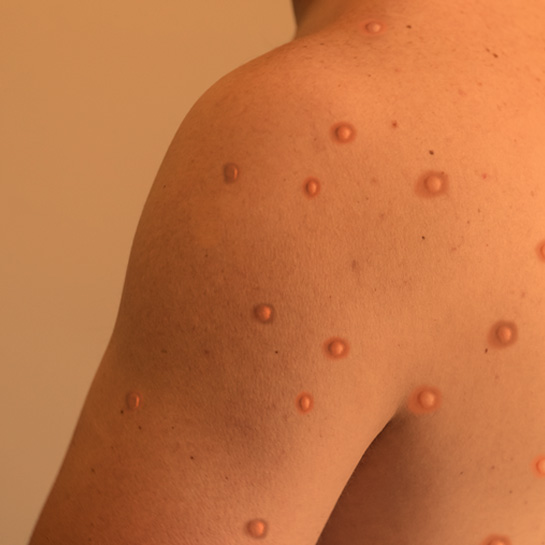Symptoms and Treatment
for Stasis Dermatitis
What is stasis dermatitis?
Stasis dermatitis most often occurs in individuals with long-term (chronic) venous insufficiency — a condition in which the veins have difficulty sending blood from the legs to the heart. Stasis dermatitis causes blood to pool in the veins of your lower legs. Over time, this fluid and blood cells will leak out of the veins into the skin and other tissues, and this leakage leads to itching, which often results in visible, sometimes permanent, changes to your skin.
What are the symptoms of stasis dermatitis?
Most people will develop stasis dermatitis in their lower legs with initial symptoms of venous insufficiency, including a dull ache or heaviness in the legs with pain that gets worse as you stand. Initially, the skin on your ankles and lower legs will swell and begin to look thin or tissue-like, as brown stains start to appear. As stasis dermatitis progresses, the skin will become red and irritated, crack when scratched, and become crusted or weepy — often mistaken for cellulitis. Some skin changes such as thickening and hardening of the skin on the legs and ankles (lipodermatosclerosis), bumpy or cobblestone skin appearance, and dark brown colored skin will become permanent.
How does ID Care diagnose stasis dermatitis?
After discussing your signs and symptoms, an ID Care specialist will examine your skin thoroughly — taking note of the critical signs of stasis dermatitis. To rule out other skin conditions, we may recommend a skin biopsy, patch test, blood test, or allergy test to confirm your diagnosis.
How does ID Care treat stasis dermatitis?
At ID Care, our main priority for treating your stasis dermatitis is to reduce swelling, inflammation, and pain. To do these things, we recommend wearing compression stockings or dressings, elevating your legs, or applying antibiotic cream to help clear your infection. In some cases, we may refer you to a surgeon to remove varicose veins.
SOURCE: Mayo Clinic








